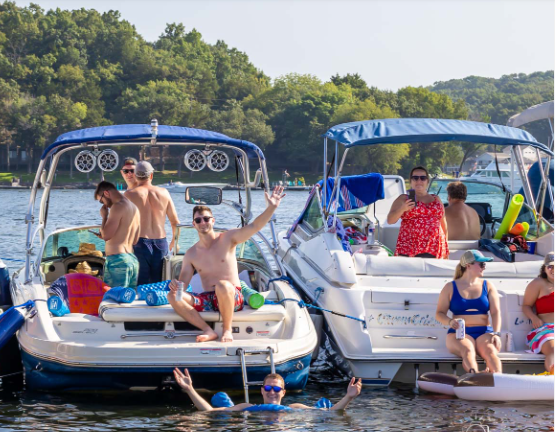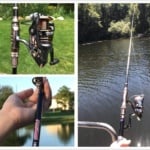Imagine yourself on a sunny day, cruising along a bustling waterfront filled with boats of all shapes and sizes. As you navigate through crowded waterways, the challenge arises of maintaining your course and avoiding collisions with the numerous vessels around you. It’s no easy feat, but with a bit of skill, a watchful eye, and adherence to the unwritten rules of the sea, you can successfully maneuver through this lively aquatic world. In this article, we explore the strategies and tips that can help you master the art of handling and navigating in crowded waterways, ensuring a safe and enjoyable boating experience for all.
Understanding the Navigation Rules
Navigating in crowded waterways requires a solid understanding of the International Regulations for Preventing Collisions at Sea (COLREGS). These regulations are designed to ensure the safety of vessels and the prevention of collisions on the water. By familiarizing yourself with these rules, you’ll have a better grasp of the actions you and other vessels should take in various situations.
Knowing the types of vessels on the waterways is also crucial. Different types of vessels have specific maneuvering capabilities and limitations, and understanding these factors is essential for safe navigation. Whether you’re dealing with a large cargo ship, a sailboat, or a personal watercraft, being aware of the characteristics of each type of vessel can help you anticipate their movements.
Understanding right of way rules is another essential aspect of navigation. Right of way rules dictate who has the priority when vessels are approaching each other or crossing paths. By knowing and adhering to these rules, you can avoid dangerous situations and ensure a smooth and safe passage.
Preparing for a Journey
Before embarking on your journey in crowded waterways, there are several important preparations to make. Checking the weather conditions is crucial since adverse weather can significantly impact your safety and the handling of your vessel. Pay attention to weather forecasts and take them into account when planning your trip.
Ensuring proper vessel maintenance is also vital. Regularly inspect and maintain your vessel to ensure that all systems are functioning correctly. This includes checking the engine, fuel, steering, and electrical systems. Making sure your vessel is in good working condition will minimize the chances of unexpected breakdowns or malfunctions that can lead to accidents.
Equipping safety gear and communication devices should never be overlooked. Always have an adequate supply of life jackets for all passengers on board. Additionally, carry essential safety equipment such as flares, fire extinguishers, and a first aid kit. Communication devices, such as a VHF radio, should also be included in your safety gear. These devices allow you to contact other vessels in case of emergencies or coordinate with port authorities.
Planning Your Route
Proper route planning is vital for navigating in crowded waterways. Researching the waterway and its traffic patterns will give you valuable insights into the typical flow of vessels and any potential bottlenecks or challenging areas. Understanding the natural currents, tide patterns, and areas of high traffic will help you choose the most suitable route.
Identifying potential bottlenecks and challenging areas will allow you to plan your navigation around these obstacles. Narrow channels, bridges, or areas with restricted visibility may require extra caution or even seeking alternative routes. By recognizing these challenges in advance, you can adjust your course and ensure a safer journey.
Considering alternative routes is a smart strategy, especially when dealing with congested waterways. Identifying alternative routes that are less crowded or have fewer potential obstacles can help you avoid the stress of navigating in heavy traffic. While the direct route may be the shortest, it may not always be the safest or most efficient option.
Maintaining Situational Awareness
Maintaining situational awareness is paramount for safe navigation. Constantly reviewing charts and navigational aids is essential to stay informed about your current position and the surrounding area. Use updated charts and keep track of any changes that may affect your route or navigation.
Using radar and other electronic navigation tools can greatly enhance your situational awareness. Radar allows you to detect other vessels or obstacles that may not be visible to the naked eye, especially in low visibility conditions. Utilize the features and capabilities of these tools to their full extent to increase your overall safety.
Keeping a watch for other vessels and obstacles is a fundamental practice. Maintaining a vigilant watch will allow you to anticipate the movements of other vessels and take appropriate action to avoid potential collisions. Be aware of your blind spots and constantly scan the water for any signs of other vessels or hazards.
Communication and Signaling
Proper communication and signaling are essential for effective navigation in crowded waterways. Using VHF radio to communicate with other vessels is a standard practice. Keep the radio tuned to the appropriate channel and follow proper protocols when communicating. Clearly state your intentions and always monitor the radio for any important announcements or warnings from other vessels or authorities.
Following proper signaling protocols is crucial for ensuring the safe navigation of your vessel. Displaying the appropriate lights at night and using the correct sound signals during restricted visibility or when passing other vessels will help convey your intentions to other mariners. Familiarize yourself with the signaling requirements outlined in the COLREGS to ensure compliance.
Using sound and light signals when necessary is an effective way to communicate your intentions to other vessels. This is particularly important in situations where visibility is limited or when maneuvering in close proximity to other vessels. By using these signals correctly, you can convey important information and avoid confusion or misunderstandings.
Maneuvering Techniques
Proper maneuvering techniques are crucial for navigating in crowded waterways. Maintaining a safe speed appropriate for the conditions is essential. Adjust your speed according to the density of traffic, visibility, and any specific speed limits in place. Slowing down in congested areas allows for better reaction time and maneuverability.
Using appropriate turning techniques is important to avoid collisions and ensure a smooth flow of traffic. Make gradual and predictable turns, and always check for other vessels before altering your course. If necessary, communicate your intentions using sound or light signals to inform other vessels of your planned maneuver.
Handling overtaking and crossing situations requires caution and adherence to right of way rules. When overtaking another vessel, give it a wide berth and communicate your intentions clearly. When crossing paths with other vessels, yield to those on your starboard side and avoid sudden course changes that could lead to confusion or accidents.
Preparing for Emergencies
Even with the best planning and precautions, emergencies can still occur. Having a well-practiced emergency response plan is crucial. This plan should outline the steps to take in case of different emergency scenarios, such as equipment failure, fires, or man-overboard situations. Ensure that all passengers onboard are familiar with the emergency procedures and know the locations of safety equipment.
Understanding distress signals and procedures is also essential. In situations where immediate assistance is needed, knowing how to properly communicate distress signals can alert nearby vessels to your situation. The COLREGS provide guidelines on distress signals, so familiarize yourself with these protocols and ensure you have the necessary signaling devices on board.
Reacting promptly in case of emergencies is vital. Maintain a calm demeanor and take immediate action to mitigate the situation and ensure the safety of all individuals on board. This may involve deploying safety equipment, initiating emergency communications, or requesting assistance from other vessels or authorities.
Interacting with Other Vessels
Safe navigation in crowded waterways involves interacting with other vessels in a responsible manner. Maintaining a safe distance from other vessels is crucial to avoid collisions. Keep a good lookout and be aware of vessels in your vicinity. Adjust your course or speed if necessary to maintain a safe distance.
Avoid obstructing narrow channels or entrances to ensure smooth traffic flow. Keep in mind that other vessels may be relying on these passages, and by blocking them, you can cause congestion and potential hazards. Be considerate of other mariners and make way when necessary.
Following the set traffic flow and lane protocols is essential for maintaining order and safety in crowded waterways. Stay within designated lanes and adhere to traffic control measures such as buoys or markers. Avoid making sudden course changes that can disrupt the established flow of vessels and increase the risk of collisions.
Navigating in Traffic Congestion
Navigating in crowded waterways can be stressful, but it’s crucial to remain patient and maintain a calm demeanor. Panicking or becoming overwhelmed can impair your judgment and increase the likelihood of mistakes. Stay focused, alert, and maintain a positive mindset.
Avoid sudden maneuvers or drastic course changes that can catch other vessels off guard and lead to accidents. It’s essential to anticipate the movements of other vessels and adjust your own course or speed accordingly. By being proactive and observant, you can navigate through traffic congestion more effectively and safely.
Anticipating the movements of other vessels is a key aspect of navigating in crowded waterways. Pay attention to the behavior of nearby vessels and predict their next actions. This will allow you to make informed decisions and take appropriate measures to avoid potential collisions or conflicts.
Understanding Local Regulations
Each waterway may have specific local rules and regulations that must be followed. Familiarize yourself with these rules before navigating in a particular area. This includes knowing designated speed limits, wake zones, and restrictions on certain areas or activities.
Understanding these local regulations is essential for maintaining compliance and respecting the rights of other mariners. Take the time to educate yourself on any specific considerations or restrictions that may be applicable to the waterway you plan to navigate. By doing so, you’ll ensure a smooth and lawful journey.
In conclusion, handling and navigating in crowded waterways requires a combination of knowledge, preparation, and careful execution. By understanding the navigation rules, preparing your vessel, planning your route, maintaining situational awareness, communicating effectively, using proper maneuvering techniques, and being prepared for emergencies, you can navigate safely and confidently even in the busiest waterways. Always prioritize safety, remain vigilant, and respect the rights of other mariners as you enjoy your time on the water.





